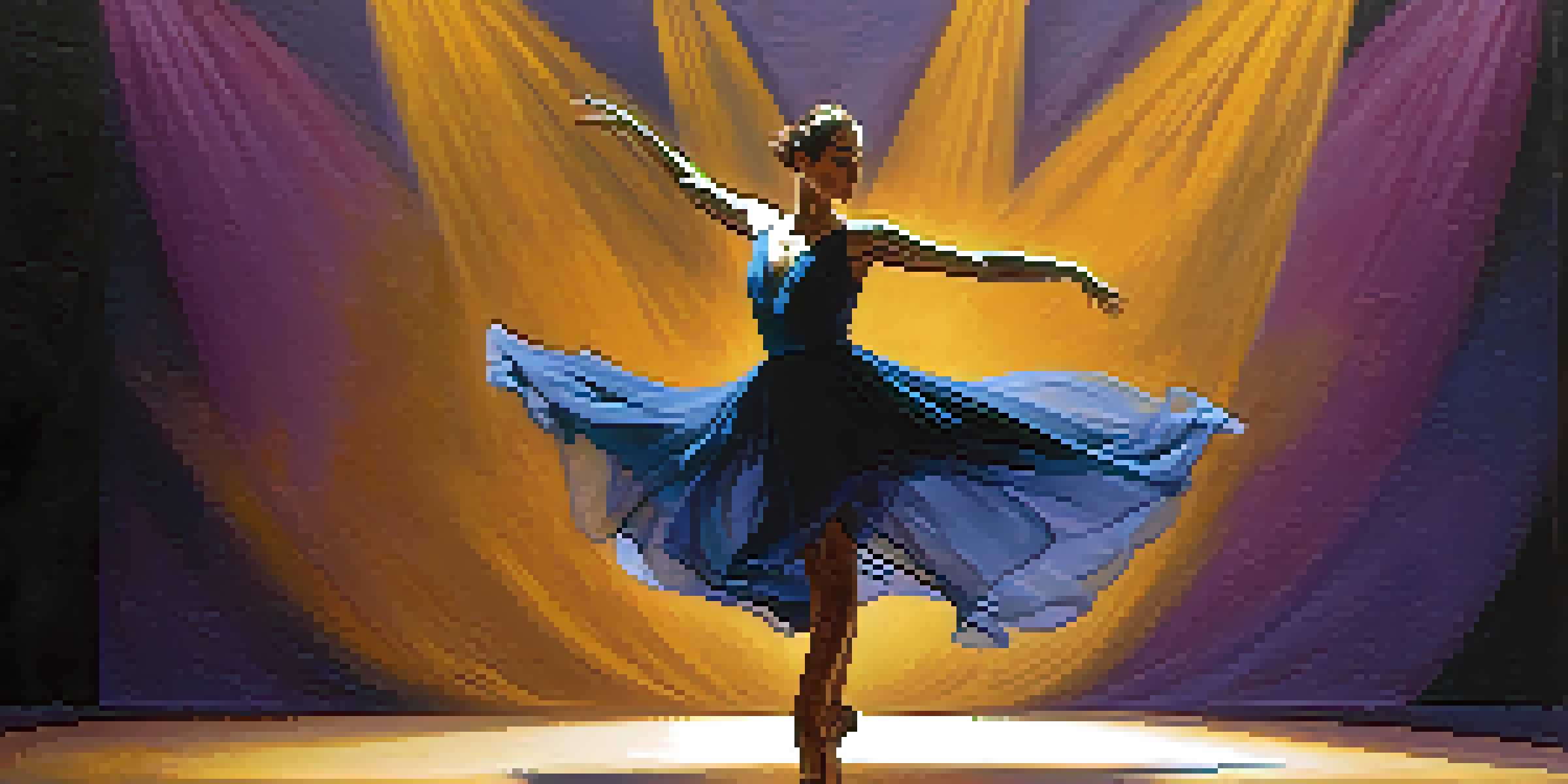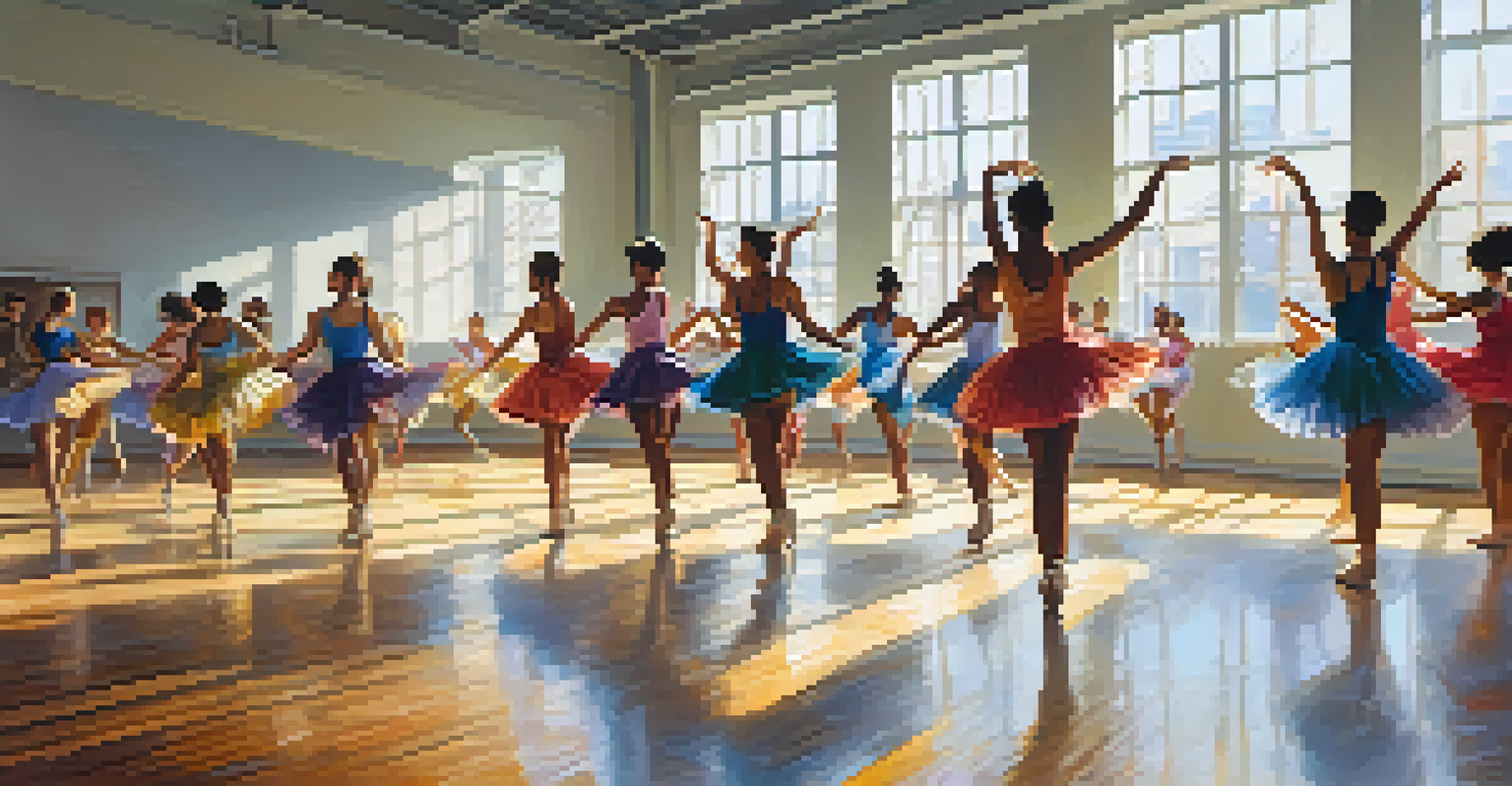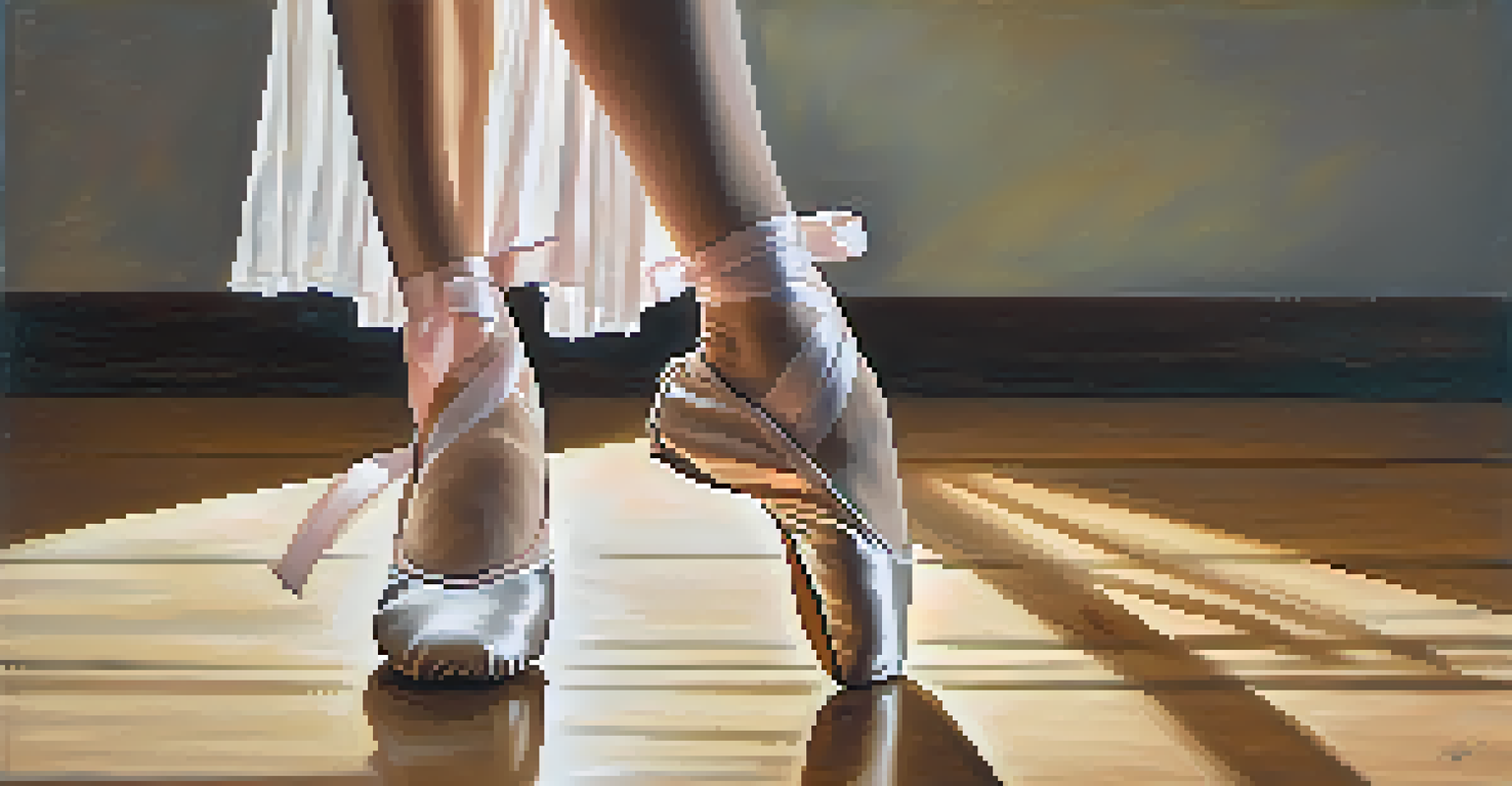The Art of Choreography: Merging Dance and Musical Elements

Understanding Choreography: A Dance and Music Fusion
Choreography is the art of designing dance movements in relation to music. It's more than just steps; it's about expressing emotions and telling stories through movement. When choreographers craft a dance, they consider how the rhythm, melody, and lyrics can influence the dancers' movements, creating a harmonious blend.
Dance is the hidden language of the soul.
Think of choreography like cooking a gourmet meal. Just as a chef combines various ingredients to create a delightful dish, a choreographer melds different dance styles and musical elements to evoke particular feelings. This fusion brings life to the performance, captivating the audience's attention.
Ultimately, choreography serves as a bridge between dance and music, allowing both art forms to shine. This interplay not only enhances the performance but also deepens the audience's emotional experience, making it memorable.
The Role of Music in Shaping Dance Movements
Music plays a pivotal role in choreography, acting as the backbone that supports the entire dance. The tempo, dynamics, and mood of a piece can dictate how dancers move, creating a dialogue between the sound and the motion. For instance, a fast-paced song might inspire energetic, lively movements, while a slower melody may evoke graceful and fluid motions.

Imagine a dancer performing to a classical symphony versus a contemporary pop song. Each musical style elicits different emotional responses and calls for distinct movement qualities, demonstrating how closely intertwined dance and music are. The choreographer's task is to interpret these musical cues and translate them into movement.
Choreography Fuses Dance and Music
Choreography intertwines dance movements with music, creating emotional narratives that enhance the audience's experience.
This synergy between music and dance not only enhances the choreography but also engages the audience on multiple levels. When executed well, the combination can evoke powerful emotions and create a lasting impression.
Choreographic Techniques: Crafting Movement Language
Choreographers employ various techniques to create unique movement languages that resonate with audiences. These techniques can include improvisation, where dancers create movements spontaneously, or structured choreography, which involves predetermined steps and formations. Each approach offers distinct advantages, allowing for creativity and expression.
Music is the shorthand of emotion.
For example, improvisation can lead to unexpected and organic movements, often resulting in a more authentic performance. On the other hand, structured choreography provides clarity and precision, ensuring that every movement aligns with the music. The balance between these techniques is crucial in creating a captivating dance piece.
Ultimately, the choice of technique reflects the choreographer's vision and the story they wish to convey. By blending various methods, they can create a rich tapestry of movement that speaks to the audience's emotions.
Incorporating Themes: Telling Stories Through Dance
Themes are vital in choreography, offering a narrative framework that guides the performance. By incorporating specific themes, choreographers can evoke particular emotions and engage the audience on a deeper level. Whether it's love, struggle, or celebration, a clear theme helps to unify the dance and create a memorable experience.
Consider the way a dance can illustrate a fairy tale or depict a historical event. Through movement, dancers can communicate complex ideas and emotions that words alone may fail to convey. This storytelling aspect of choreography allows performers to connect with their audience, making the experience more relatable.
Themes Add Depth to Performances
Incorporating specific themes allows choreographers to evoke emotions and tell stories, making the dance relatable and memorable.
By weaving themes into their work, choreographers create layers of meaning that resonate with viewers. This adds depth to the performance, transforming it from mere entertainment into an artistic expression that lingers long after the curtain falls.
The Importance of Collaboration in Choreography
Collaboration is a cornerstone of successful choreography, bringing together various talents to create a cohesive performance. Choreographers often work closely with dancers, musicians, and designers to ensure that every aspect of the production aligns perfectly. This teamwork fosters creativity and innovation, resulting in a richer artistic experience.
For instance, a choreographer might collaborate with a composer to develop original music that complements the dance. Similarly, working with costume designers can enhance the visual storytelling, allowing dancers to express their characters more fully. This collaborative spirit leads to performances that are greater than the sum of their parts.
Effective collaboration requires open communication and a shared vision. When all team members contribute their unique skills and perspectives, the final result is a beautifully crafted piece that resonates with audiences and showcases the artistry of everyone involved.
Emotional Connection: Engaging the Audience Through Dance
One of the most powerful aspects of choreography is its ability to forge emotional connections with the audience. Through movement, dancers can convey feelings and experiences that resonate on a personal level. This emotional engagement is what often leaves a lasting impression on viewers.
For example, a dancer’s portrayal of joy can uplift the audience, while a depiction of sorrow can evoke empathy. By channeling their emotions into their performance, dancers invite the audience to share in their journey, creating a communal experience. This connection is what makes dance so universally appealing.
Collaboration Enhances Creativity
Successful choreography relies on collaboration among dancers, musicians, and designers, resulting in a cohesive and innovative performance.
Choreographers play a crucial role in facilitating this emotional connection. By thoughtfully designing movements and selecting music that enhances the emotional narrative, they guide the audience through a rollercoaster of feelings, making the performance unforgettable.
The Future of Choreography: Innovations and Trends
As we move forward, the world of choreography continues to evolve, embracing new technologies and trends. Innovations such as digital media, virtual reality, and interactive performances are transforming how dance is created and experienced. These advancements open up exciting possibilities for choreographers to explore new artistic expressions.
For instance, choreographers can now integrate multimedia elements into their performances, combining dance with film and visual art. This fusion not only enhances the storytelling but also captivates audiences with a multisensory experience. As technology continues to advance, the landscape of choreography will undoubtedly shift, inspiring new generations of dancers.

In addition to technology, contemporary themes such as social justice and personal identity are increasingly influencing choreography. Dancers are using their art to provoke thought and inspire change, demonstrating the powerful role that dance can play in society. As these trends emerge, the future of choreography promises to be dynamic and impactful.